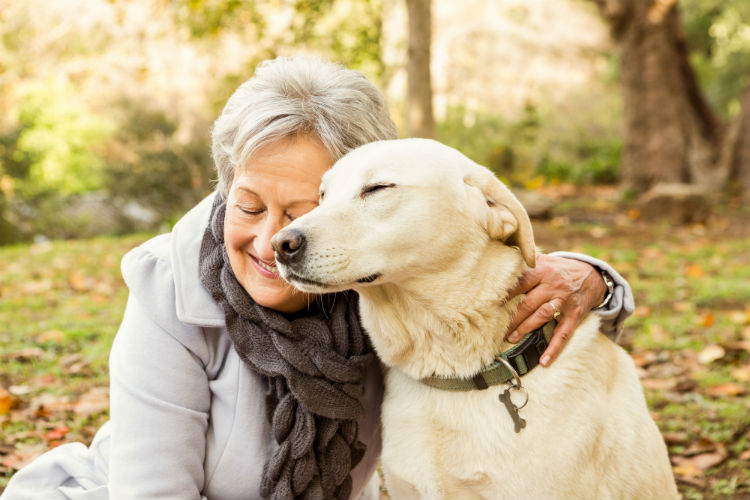Last Updated on February 14, 2024 by Dog Lover
Can Pets Help People with Depression? Exploring the Therapeutic Benefits
Depression is a complex and challenging condition that affects millions of people worldwide. While there are various treatment options available, one unconventional yet promising approach is the therapeutic benefits of pets.
In this article, we will delve into the question of whether pets can help people with depression and explore the potential positive impacts they can have on mental health.
Feeling lost in the fog of depression? Battling feelings of isolation and low mood? You’re not alone. Millions worldwide grapple with this debilitating condition, searching for relief and a path back to joy. While traditional therapies like medication and psychotherapy are crucial, could the answer also lie in the furry, feathered, or even scaled companions we call pets?
The bond between humans and animals is undeniable. From playful pups to purring cats, our pets offer companionship, unconditional love, and a sense of purpose. But can this powerful connection actually alleviate the symptoms of depression? Let’s delve into the science and heartwarming stories to explore the therapeutic benefits of pets for people with depression.
The Science Behind the Wagging Tail and Purring Power
While petting a dog or watching a fish tank might seem like simple pleasures, research suggests these interactions have a profound impact on our brains and emotional well-being. Here’s how:
- Reduced Stress and Anxiety: Interacting with pets lowers cortisol (the stress hormone) levels, promoting relaxation and calming the nervous system.
- Increased Happiness Hormones: Spending time with furry friends boosts oxytocin and serotonin, hormones associated with happiness and well-being.
- Enhanced Social Interaction: Pets can combat loneliness and isolation, encouraging social interaction and providing a sense of belonging.
- Improved Sense of Purpose: Caring for a pet creates a daily routine and responsibility, fostering a sense of purpose and accomplishment.
- Increased Physical Activity: Walking dogs, playing fetch, or simply engaging with our pets often leads to more physical activity, which benefits both physical and mental health.
Beyond Science: Real-Life Stories of Hope and Healing
The scientific evidence is compelling, but nothing speaks louder than personal stories. Countless individuals battling depression have found solace and support in their animal companions.
- Sarah, a college student struggling with isolation, credits her rescue dog with providing much-needed companionship and reducing anxiety attacks.
- John, a retired widower, finds comfort in his cat’s gentle purrs and cuddles, easing his loneliness and encouraging interaction with other pet owners.
- Emma, a teenager with social anxiety, finds confidence and emotional grounding through caring for her horse, building self-esteem and a sense of responsibility.
These are just a glimpse into the countless lives positively impacted by the human-animal bond.
Not a One-Size-Fits-All Solution
It’s important to remember that pets are not a magic cure for depression. They require commitment, care, and financial responsibility. Additionally, not everyone finds comfort in animal companionship. Open communication with a healthcare professional is crucial to determine if pet ownership is a suitable option for your individual needs and circumstances.
:max_bytes(150000):strip_icc()/GettyImages-539178307-5b314710eb97de0036251afd.jpg)
Taking the First Pawsitive Step
If you’re considering welcoming a furry friend into your life, here are some tips:
- Choose a pet that aligns with your lifestyle and abilities. Do your research and find a species that matches your energy level, living space, and financial resources.
- Adopt from a shelter or rescue. Give a loving home to an animal in need and experience the unique joy of rescuing.
- Start small. Consider volunteering at a shelter, fostering a pet temporarily, or spending time with friends’ pets before making a long-term commitment.
- Prioritize responsible pet ownership. Provide proper care, training, and veterinary attention to ensure your pet’s well-being and a happy life together.
Remember, You’re Not Alone
Battling depression can be an overwhelming journey, but you don’t have to face it alone. Explore the potential benefits of pet ownership, seek professional help if needed, and connect with others who understand. With support, resources, and sometimes a furry friend by your side, you can find your way back to brighter days
The Power of Companionship
Loneliness and isolation are common triggers for depression. Having a pet by your side can provide a constant source of companionship, reducing feelings of loneliness and offering emotional support. Pets are non-judgmental and offer unconditional love, which can be incredibly comforting during difficult times.
Whether it’s a loyal dog, a playful cat, or even a soothing aquarium, pets can fill the void of emptiness and provide a sense of purpose. Caring for a pet requires responsibility and routine, giving individuals a reason to get out of bed in the morning and establish a sense of structure in their lives.
Physical and Psychological Benefits
Interacting with pets has been shown to have numerous physical and psychological benefits. Engaging in activities such as playing, petting, or walking a dog can release endorphins, also known as the “feel-good” hormones. These endorphins help combat stress, reduce anxiety, and elevate mood.
Pets can also serve as a distraction from negative thoughts and rumination. Focusing on their needs and providing care can shift the focus away from personal struggles, allowing individuals to experience moments of joy and contentment.

A Source of Unconditional Love
Depression often leads to self-doubt, feelings of worthlessness, and a lack of self-esteem. Pets, on the other hand, offer unwavering love and acceptance, regardless of a person’s flaws or struggles. This unconditional love can help individuals with depression develop a more positive self-image and improve their overall well-being.
Reducing Stress and Anxiety
Stress and anxiety are common symptoms of depression. The presence of a pet has been shown to lower blood pressure, reduce heart rate, and decrease cortisol levels, the hormone associated with stress. Simply stroking a pet’s fur or hearing the rhythmic sound of an aquarium can induce a sense of calmness and relaxation.
The responsibility of caring for a pet can also provide a sense of purpose and distract individuals from their worries. Pets offer a welcome respite from the demands of daily life, allowing people to focus on the present moment and find solace in their furry companions.
Conclusion
While pets cannot replace professional treatment for depression, they can undoubtedly play a significant role in improving mental well-being. The companionship, love, and joy that pets provide can offer solace during challenging times and contribute to a more positive outlook on life.
If you or someone you know is struggling with depression, consider exploring the therapeutic benefits of pets. Remember, it’s essential to consult with a healthcare professional to develop a comprehensive treatment plan.
Frequently Asked Questions
Can any type of pet help with depression?
Yes, various types of pets, including dogs, cats, birds, and even small animals like hamsters or guinea pigs, can provide emotional support and help alleviate symptoms of depression.
How long does it take for pets to have an impact on depression?
The time it takes for pets to have an impact on depression can vary from person to person. Some individuals may experience immediate benefits, while others may take longer to form a bond with their pet.
Are there any specific pet therapies available for depression?
Yes, there are specific pet therapies, such as animal-assisted therapy, where trained animals and therapists work together to help individuals with depression. These therapies can be beneficial in a clinical setting.
Can pets help with other mental health conditions besides depression?
Yes, pets can provide support and therapeutic benefits for various mental health conditions, including anxiety disorders, PTSD, and even autism spectrum disorders.
Are there any risks or considerations when getting a pet for depression?
While pets can bring immense joy and support, it’s crucial to consider factors such as allergies, lifestyle, and the ability to provide proper care before getting a pet. It’s also essential to ensure that the individual’s depression is being treated by a healthcare professional.
Remember, pets should complement existing treatment plans and not be relied upon as the sole solution for depression.
Remember, exploring the potential benefits of pet ownership for depression is one step towards a healthier and happier you. However, always prioritize your well-being and seek professional help for comprehensive support. Together, we can navigate the challenges and find pathways to emotional healing.
Disclaimer: The information provided in this blog post is for informational purposes only and should not be construed as professional medical advice. Please consult with a qualified healthcare professional for diagnosis and treatment of depression.
Verified Source References:
1. The National Institute of Mental Health (NIMH): https://www.nimh.nih.gov/health/topics/depression/index.shtml
This website offers a comprehensive overview of depression, including its symptoms, causes, treatments, and research. It also provides information on the potential benefits of animal companionship for people with depression.
2. The Human Animal Bond Research Institute (HABRI): https://www.habri.org/
This organization conducts and promotes research on the human-animal bond and its impact on health and well-being. Their website includes resources on different types of animal-assisted interventions, including information on pets and mental health.
- National Institute of Mental Health: https://www.nimh.nih.gov/health/topics/depression/index.shtml
We hope this article provides valuable insights and encourages you to seek support on your journey to emotional well-being. Remember, you are not alone, and there are resources and hope available.

















